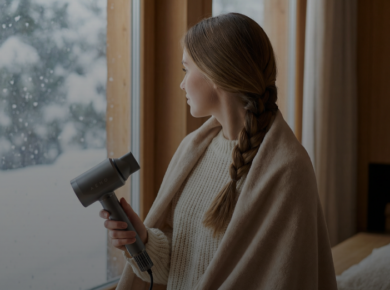Vacuum cleaners are vital tools for maintaining a clean and fresh home, but there are certain things you should avoid vacuuming to keep them functioning well for years to come.
What Can’t Be Vacuumed?
Some objects can harm your vacuum, decrease its performance, or even result in expensive repairs. In this guide, we’ll outline what you should never vacuum, explain why these items can be problematic, and offer expert advice on handling these cleaning challenges safely!
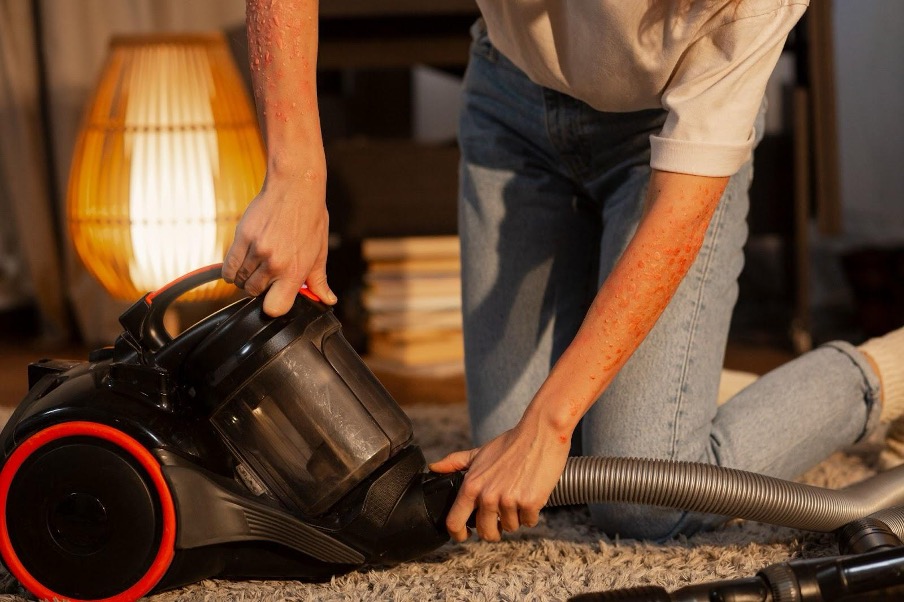
Why Some Things Shouldn’t Be Vacuumed
Vacuum cleaners are built to remove dust, dirt, and small debris from various surfaces. However, their motors, filters, and brushes aren’t equipped to handle everything on your floor or countertop.
It’s essential to understand which items your vacuum should steer clear of and the reasons behind it. So, what can’t be vacuumed?
1. Liquids
Everyone must keep in mind that vacuum cleaners, particularly those not intended for wet cleaning, should never be exposed to liquids. Spills from water, coffee, and other beverages can lead to various issues:
- Motor damage. Most vacuum cleaners aren’t waterproof, and liquid can seep into the motor, resulting in a short circuit.
- Risk of electric shock. Attempting to vacuum up liquids can lead to unpleasant experiences and may even require a trip to the hospital.
- Mold and mildew growth. If moisture remains in the vacuum bag or filter, it creates a perfect breeding ground for mold.
What should you do?
If you have a spill, use cellulose napkins, paper towels, or cloth to clean it up. A vacuum cleaner is only effective if specifically designed for wet cleaning and handling liquids.
2. Fine powders
Fine powders, like flour, baby powder, or ash, can pose risks to the filters and motors of standard vacuum cleaners:
- Clogging filters. These fine particles can quickly block filters, decrease suction power, and lower cleaning effectiveness.
- Harming the motor. Tiny particles entering the motor cause it to overheat and potentially result in significant damage.
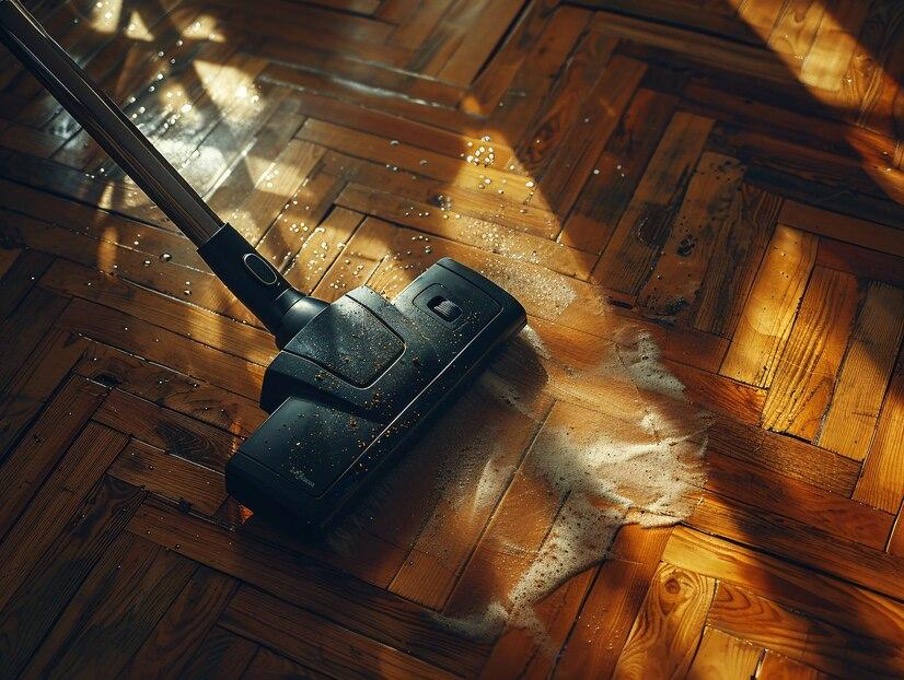
What should you do?
Instead of vacuuming, sweep or gently collect fine powders using a damp cloth. Alternatively, consider using a vacuum cleaner with a HEPA filter to trap ultra-fine particles.
3. Large glass shards
While it might seem like a good idea, vacuuming up broken glass is not safe. Here’s why:
- Damage to vacuum cleaner parts. Large glass shards can easily puncture or tear the vacuum cleaner bag and harm the internal components.
- Risk of injury. If the glass breaks into smaller pieces inside the vacuum, sharp shards can fly out and potentially injure you while cleaning or emptying the bag.
What should you do?
Is it safe to vacuum glass? We advise against trying this out for yourself. Collect the larger shards in a broom and dustpan, and use a damp paper towel for the smaller ones, it works best.
4. Small metal objects
Vacuuming up metal items like coins, paper clips, and screws is quite hazardous. If these objects get into your vacuum cleaner, the results can be unpleasant:
- Internal damage. Metal pieces can harm the brush roller, motor, and hose. The only solution is often costly repairs, or, in the worst-case scenario, you may need to buy a new vacuum cleaner.
- Fire hazard. When metal comes into contact with the motor or electrical components, it can create sparks, potentially leading to a fire.
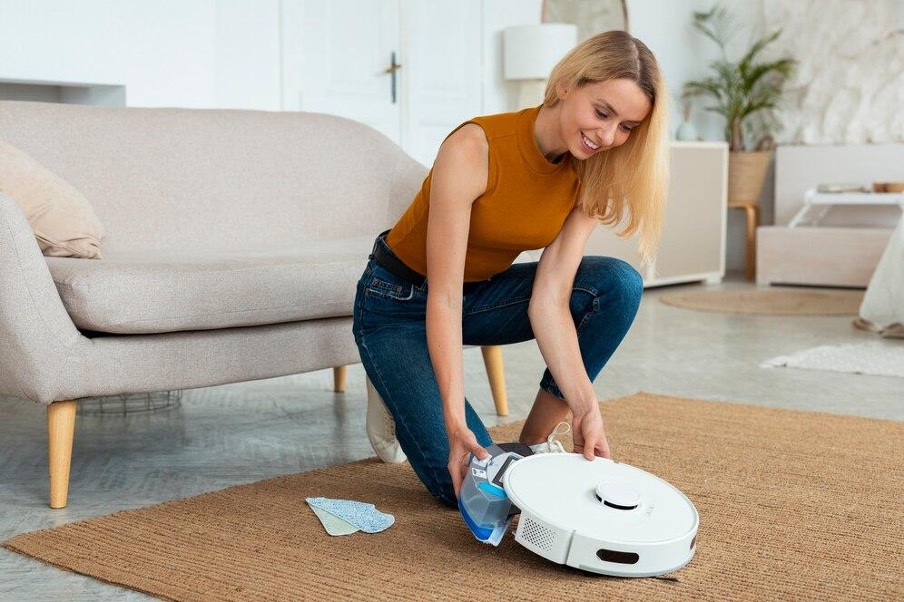
What should you do?
Before vacuuming, take a moment to check the area and manually pick up any coins, paper clips, or screws. Additionally, consider using a magnetic brush to gather small metal objects from the floor, allowing you to use your vacuum cleaner with complete peace of mind.
5. Burning cigarette ash or hot coals
Never vacuum up any hot or burning materials. The consequences of such careless actions include:
- Risk of fire. Hot ash or coals can ignite debris inside the vacuum cleaner, potentially leading to a fire.
- Damage to vacuum cleaner components. High temperatures can cause plastic parts and filters to warp.
What should you do?
Allow the fireplace ash or coals to cool completely, then use a metal dustpan and brush to collect them.
6. Wet food or fresh stains
It’s best to keep wet or sticky food and soil remnants away from the vacuum cleaner as they can lead to several issues, including:
- Clogging of the vacuum cleaner. Sticky food can adhere to the brush roll, block the hose, and damage the filters.
- Unpleasant odors. Food particles left inside the vacuum can produce bad smells over time and may even become a breeding ground for bacteria.
What should you do?
To clean up wet food, use paper towels, a sponge, or a cloth. You can attempt to pick up dried, non-sticky crumbs with a handheld vacuum, but be sure to do this carefully while keeping an eye on the equipment’s condition.
7. Large amounts of pet hair
While pet hair isn’t the worst thing a vacuum cleaner has to deal with, a significant buildup can lead to several issues:
- Clogging of the filter and brush. When there’s a lot of hair, it can quickly wrap around the brush roller and clog the filter, which reduces suction power.
- Overheating. This clogging forces the motor to work harder, which can result in overheating and potential equipment failure.
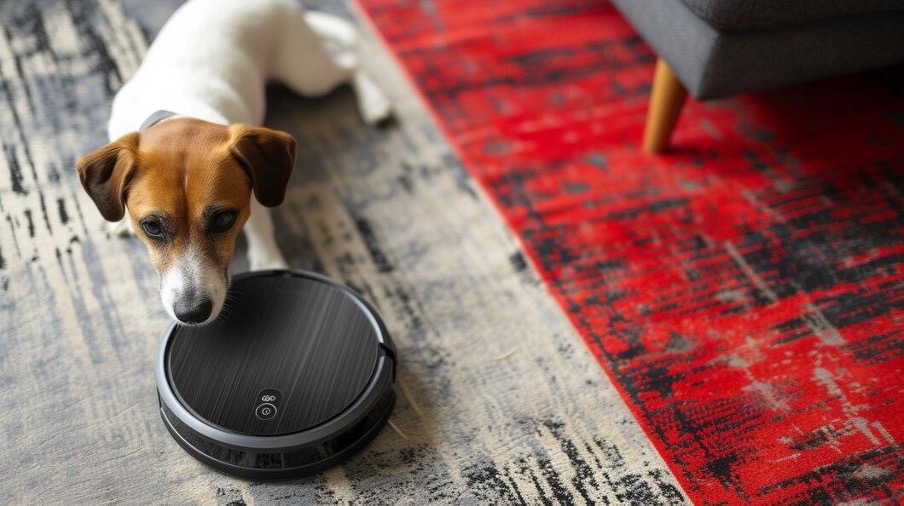
What should you do?
Make it a habit to regularly clean the brush roller, or even better, use special brushes to groom your pets, helping minimize the amount of hair that ends up on the floor, carpet, and furniture.
8. Cereals, solid particles of dry food
At first glance, they may seem perfect for vacuuming, but it’s actually more effective to remove these particles with a mop. This method can help you avoid:
- Hose blockages. Larger, solid pieces can become lodged in the hose or tubes, reducing suction power and necessitating professional cleaning.
- Damage to internal components. Solid crumbs and fragments can scratch or even break parts of the equipment.
What should you do?
Use a broom to gather the larger pieces of dry food and reserve the vacuum for the smallest, dust-like crumbs.
How to Choose a Vacuum Cleaner?
Choosing a vacuum cleaner is an important decision that can significantly impact the cleanliness and comfort of your home. It’s essential to approach this selection thoughtfully, rather than just picking the first model you see. Consider your specific needs and circumstances.
1. Consider your flooring type
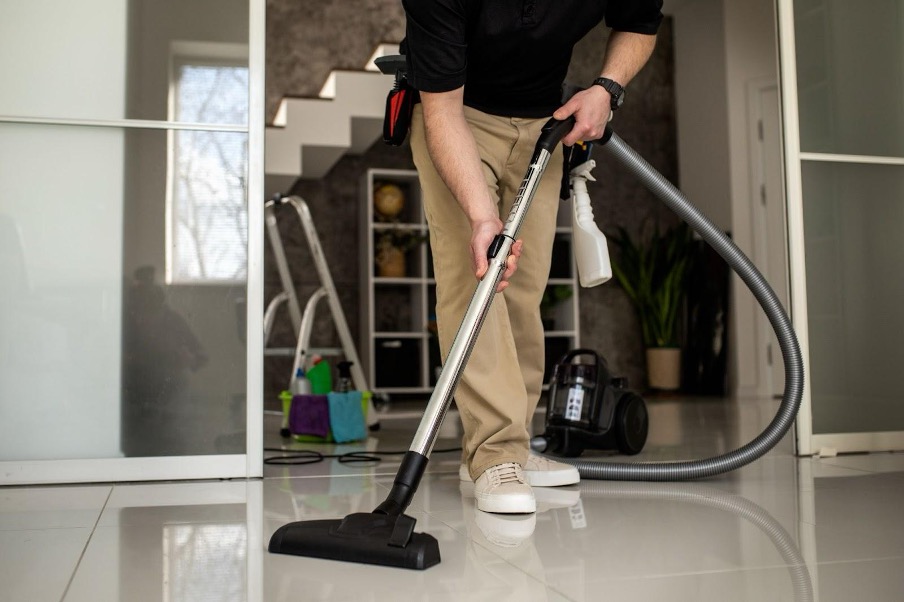
Different flooring types require different features in a vacuum cleaner:
- For parquet floors, opt for models with a soft roller or one that allows you to turn off the brush roller, as brushes can scratch and damage wooden surfaces.
- For carpets, look for vacuum cleaners with strong suction and a rotating brush roller. Adjustable height settings can also be beneficial, making it easier for the vacuum to move across the surface.
- Tiles and laminate, similar to hardwood, do not require a hard brush roller.
- If you have mixed surfaces, a vacuum cleaner with adjustable settings will be ideal, helping you save time and prolong the life of the equipment.
2. Pay attention to the pet’s needs

When you have pets, you’re well aware of the hair and dirt they can bring into your living space. To effectively manage the mess, keep these helpful tips in mind:
- Use specialized pet hair attachments to easily clean sofas, stairs, and various surfaces.
- Look for HEPA filtration, which helps trap hair and dust mites, reducing allergens in your home.
- Ensure the vacuum has high suction power to lift hair from deep within carpet fibers effectively.
3. Are there any allergy sufferers in the household?
It’s crucial to have a vacuum that reduces allergens if you or someone in your home has allergies, dust sensitivities, or asthma. Consider these features:
- True HEPA filters. These filters capture 99.97% of airborne particles as small as 0.3 microns. Some vacuums also come with sealed systems that prevent unfiltered air from escaping.
- Bag or bagless model. Bagged vacuums are typically better for allergy sufferers because they contain dust within the bag, minimizing contact while cleaning the appliance.
- UV light and anti-allergen seals. Certain vacuums utilize UV light and advanced filtration to eliminate bacteria and dust mites.
4. Consider the size and layout of your home
Compact cordless vacuum cleaners or handheld models are ideal for small apartments or individual rooms. They are lightweight, easy to store, and perfect for quick cleanups.
When it comes to cleaning multi-room homes, lightweight upright vacuum cleaners with removable containers make the job easier, especially if you’re vacuuming outside. You might also opt for models with long cords or a cordless vacuum with an extended battery life, which will help you avoid the hassle of switching outlets and frequent recharging breaks.
5. Evaluate the unique features of different types of vacuum cleaners
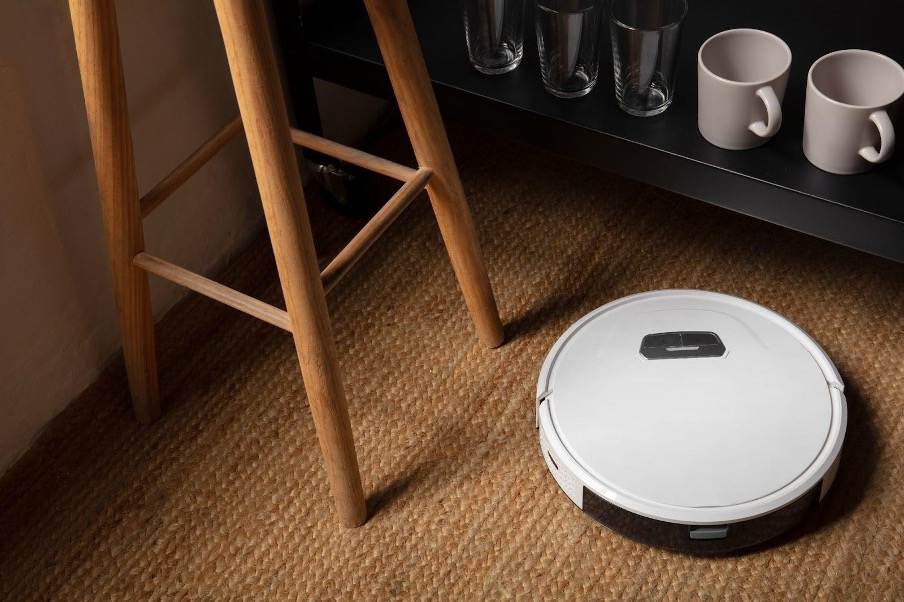
- Upright vacuums. These powerful machines come with a wide cleaning path, making them ideal for tackling large carpets. However, their weight can make it challenging to maneuver in tight areas.
- Canister vacuums. Known for their versatility, these models are excellent for cleaning stairs and reaching under furniture. They perform well on mixed flooring but may take up more storage space.
- Stick vacuums. These lightweight, cordless options are perfect for quick, everyday cleanups. However, they often lack the deep cleaning capabilities of larger vacuums and typically have shorter battery lives.
- Robot vacuums. Ideal for daily maintenance, these devices can be cleaned autonomously. However, they may not have the power needed for thorough deep cleaning.
- Handheld vacuums. Designed for quick spot cleaning, they are user-friendly and easy to store. However, they generally lack the suction power to clean an entire home.
6. Don’t overlook the noise level
This aspect might be more crucial than it appears, particularly if you reside in a building with inadequate sound insulation or enjoy a peaceful atmosphere.
Typically, vacuum cleaners generate noise levels between 70–80 dB, comparable to a hair dryer. If this volume is excessive for your liking, consider opting for models that operate at lower decibel levels, like robot vacuum cleaners.
7. Additional useful features
Many vacuum cleaners now offer extra features to enhance cleaning efficiency and convenience. These features include:
- LED lights on the nozzle help illuminate dust and debris, particularly in hard-to-reach areas under furniture.
- Self-cleaning brushes that minimize tangling and prevent clogs.
- A variety of attachments for cleaning upholstery, dusting, reaching crevices, and more.
Conclusion
A vacuum cleaner is an essential household appliance that modern life cannot do without. However, like any other device, it is chosen wisely and carefully handled to avoid damage. You can order vacuum cleaners that will satisfy any request at AENO.

We trust that our straightforward tips will assist you in maintaining a clean home effortlessly and enjoyably!
FAQ
1. How to ruin a vacuum cleaner?
Vacuum cleaners are designed to handle dust, dirt, pet hair (in moderation), and small dry debris without issues. However, large, sticky substances, metallic items, and liquids can lead to significant damage.
2. Can you vacuum ground coffee?
It’s advisable to avoid this, as fine powders can clog the vacuum’s filter and motor. Instead, consider sweeping up the coffee or using a damp cloth.
3. What happens if you vacuum liquids?
Vacuuming liquids can harm the motor, pose a risk of electric shock, and lead to mold growth inside the vacuum.
4. Can you vacuum rice?
Rice grains are relatively coarse for a vacuum’s internal components. In large amounts, they can block the hose or filter. It’s better to sweep up the spilled rice first and then vacuum any remaining small bits.
5. Can you vacuum glass?
No. Glass shards can damage your vacuum by tearing the bag, scratching the hose, or breaking motor components. They can also become projectiles inside the vacuum, posing a risk of injury while cleaning.
6. How can you remove pet hair without damaging your vacuum cleaner?
Start by using a sticky roller or rubber gloves to clean your furniture and carpets, then proceed to vacuum the areas.
7. What should you do if you accidentally vacuum up something hazardous?
- First, turn off the vacuum cleaner and unplug it.
- Next, carefully take apart the device to retrieve the dangerous item.
- If you’ve vacuumed up liquids, ensure the vacuum cleaner is dry thoroughly before using it again.
8. Are robot vacuums effective on pet hair?
Yes, many robot vacuums are specifically designed to handle pet hair, but they might have difficulty on thick carpets or during heavy shedding periods.
9. Is a cordless vacuum powerful enough for a deep clean?
Cordless vacuums typically have less power compared to corded models. However, some offer good cleaning performance, which can be adequate if you don’t have pets that shed heavily or if allergies aren’t a concern in your home.
10. How important is a HEPA filter?
If you suffer from allergies or asthma, a HEPA filter is crucial for trapping small particles and enhancing indoor air quality.
Want to BUY this product?
Check out retailer list for your country.






